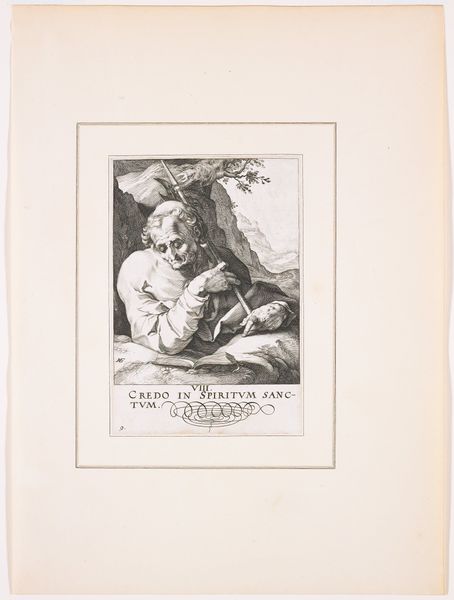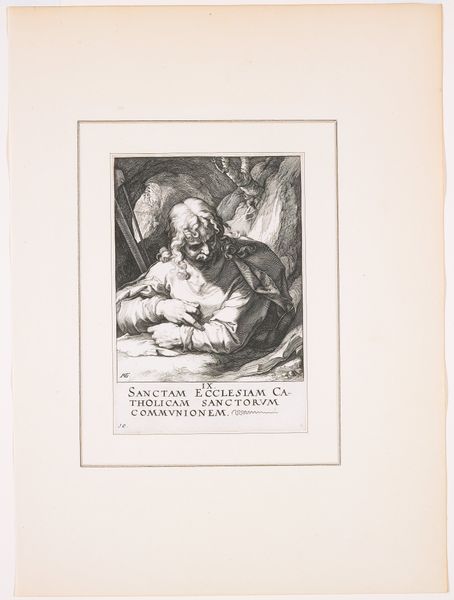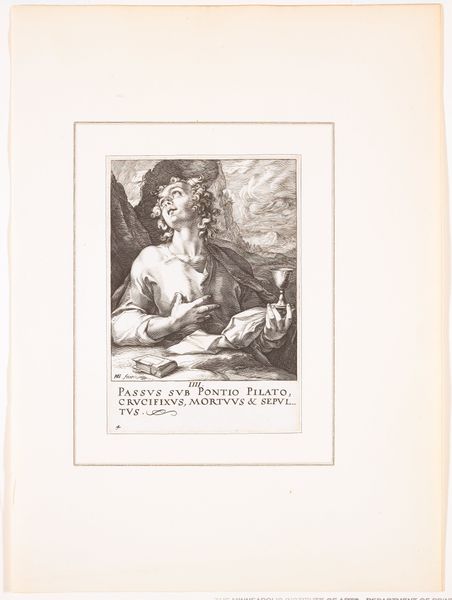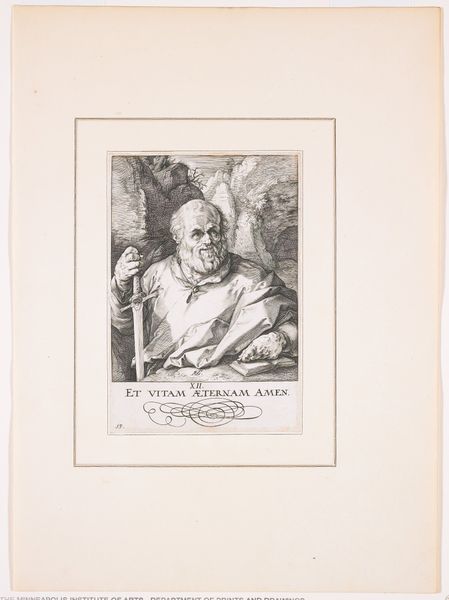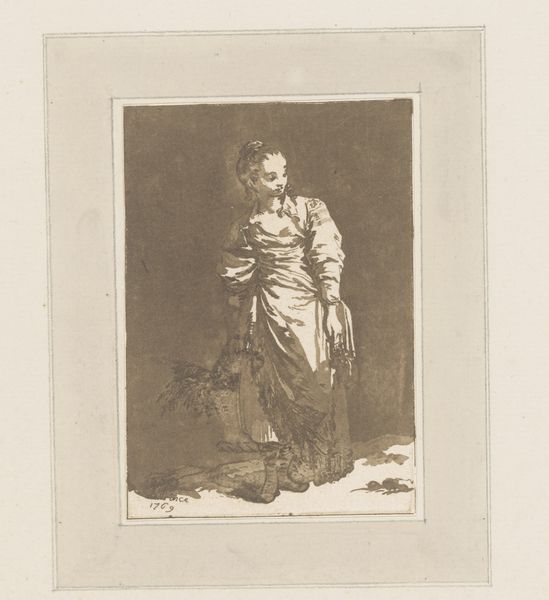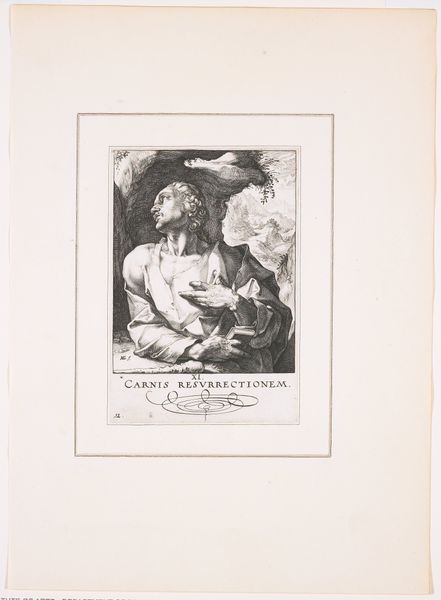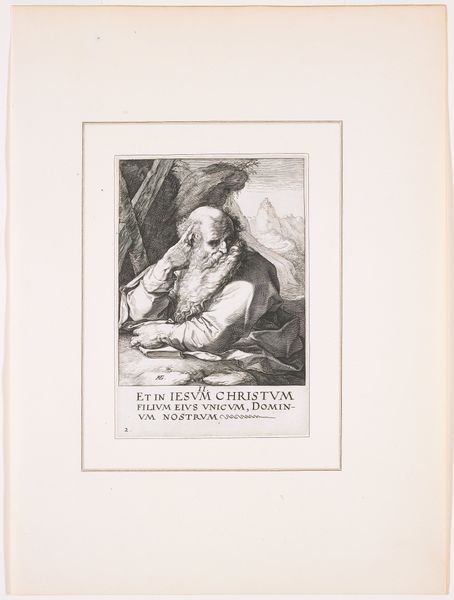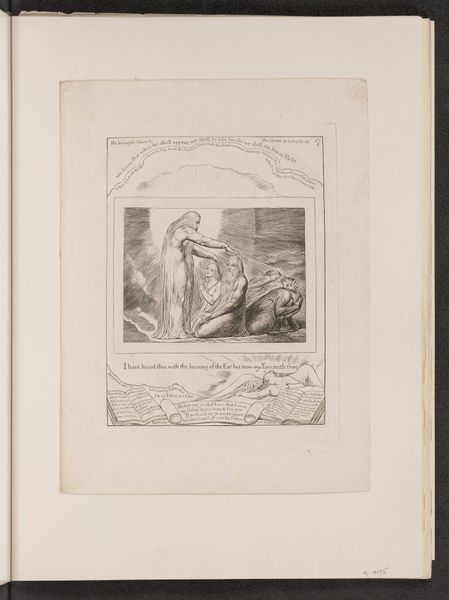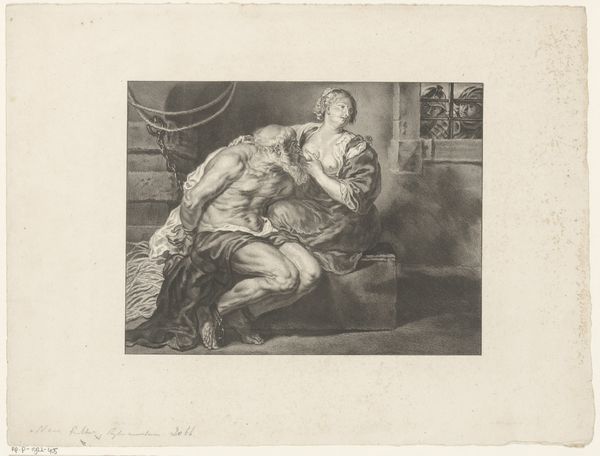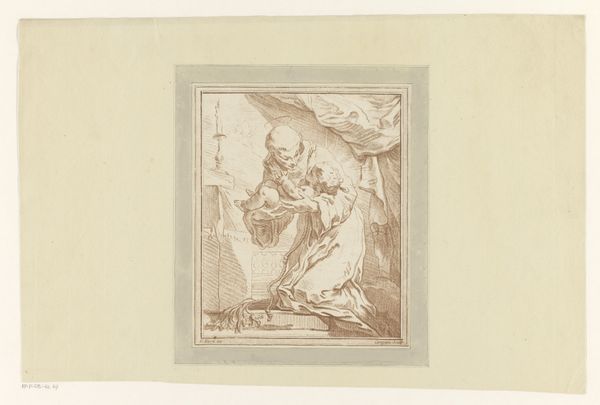
drawing, print, paper, ink, engraving
#
portrait
#
drawing
# print
#
paper
#
ink
#
history-painting
#
northern-renaissance
#
engraving
Dimensions: 5 7/8 x 4 1/16 in. (14.92 x 10.32 cm) (sheet)12 1/2 x 9 1/8 in. (31.75 x 23.18 cm) (mount)
Copyright: Public Domain
Editor: Here we have Hendrick Goltzius’ "Saint Simon", created in 1589. It’s an engraving printed in ink on paper, and it’s currently housed at the Minneapolis Institute of Art. The figure looks quite serious and introspective, almost burdened. How would you interpret this work, considering its historical context? Curator: That pensiveness you observe, I think, reflects a deliberate choice on Goltzius’s part to engage with the changing role of religious imagery during the late 16th century. Remember, this is the period of the Counter-Reformation. Prints like these were crucial for disseminating carefully considered, orthodox depictions of saints in a world grappling with the impact of Protestantism on image worship. Notice how Simon is depicted in the act of reading; the print invites a similar individual contemplation from the viewer. Editor: That makes sense. The focus on reading emphasizes individual understanding, something at odds with strictly mandated religious images, or more performative religious activities in general. Does the text in the print itself provide a further clue? Curator: Absolutely. The inscription *Remissionem Peccatorum*, or remission of sins, emphasizes the key function that the church – or indeed the Saint in question - provides for society, by enabling spiritual cleansing. Goltzius also made prints after other artists, many of which had a clear propaganda intent in response to criticisms levelled by the reformation. Given what was at stake during this time, what might have been the practical role for an image like this? Editor: Perhaps as a way to reinforce established Catholic doctrine, and combat iconoclasm by subtly educating viewers? The print, therefore, acts as a kind of didactic tool, almost like visual theology in print? Curator: Precisely! These images actively shaped how individuals perceived and interacted with religious authority. By framing doctrine with reference to historical actors like Saint Simon, theological messaging could appear much more organic, perhaps even spontaneous. Editor: I had no idea prints could be so actively involved in larger political and religious conversations! Thanks for shedding light on this. Curator: It's a reminder that art isn't created in a vacuum, it is made in specific institutional circumstances. Understanding those is key to interpreting the work’s meaning, and its impact.
Comments
minneapolisinstituteofart almost 2 years ago
⋮
The Dutch Mannerist Hendrik Goltzius was the leading printmaker of his time. A virtuoso engraver, innovative woodblock cutter, and superb draftsman, Goltzius continues to inspire awe with his wondrous technique and to convert even the most jaded art spectators to print enthusiasts. This print is from a series of fourteen engravings—"Christ, the Twelve Apostles, and Paul"—executed in 1589 when Goltzius was at the height of his powers. The series is a kind of demonstration piece displaying Goltzius's unrivaled technique and boundless imagination.
Join the conversation
Join millions of artists and users on Artera today and experience the ultimate creative platform.
